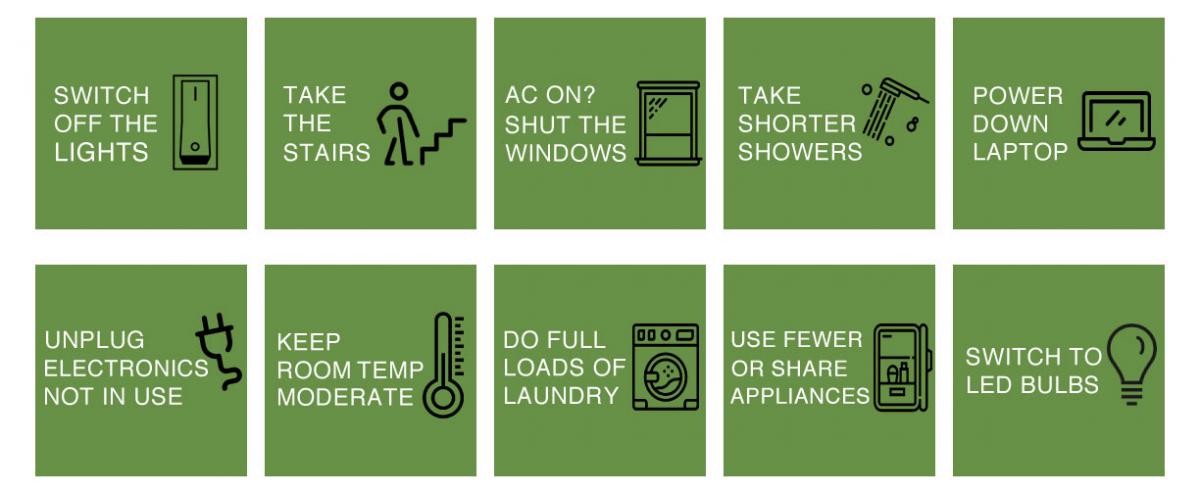Climate change is real, and one of its biggest culprits is carbon emissions. Education institutions play a significant role in emitting carbon into the atmosphere so it is important to learn how to reduce carbon footprint at schools.
According to the EPA, schools account for about 26% of all commercial building energy use in the United States. That means there’s a lot of room for improvement when it comes to how to reduce carbon footprint at schools.
Reducing your school’s carbon footprint not only helps preserve our planet for future generations but can also lead to cost savings for schools – money that can be better spent on things like books, teachers’ salaries, and new technology.
Table of Contents
It may seem like a small thing, but making sure to shut down and unplug your electronics when you’re finished using them can make a big difference in reducing your carbon footprint.
Think about it this way: a laptop that’s left on and plugged in consumes about 65% more energy than one that’s turned off and unplugged. That means that by simply shutting down your laptop and unplugging it when you’re done using it, you can save a significant amount of energy.
The same goes for all your other electronics. When you’re not using them, make sure to shut them down and unplug them. It’s a small change that can make a big difference in reducing your carbon footprint.
 (Source)
(Source)
How to Reduce Carbon Footprint at School
Did you know that the average person emits around 4.7 metric tons of carbon dioxide each year? And that transportation accounts for around 28% of these emissions in the United States? This means that, as individuals, we can make a big impact on reducing our carbon footprints by changing the way we get to school.
So, how to reduce carbon footprint at school?
One of the simplest ways to reduce your carbon footprint is to walk or ride your bike to school instead of taking the car. If everyone in your family started doing this just twice a week, it would make a big difference!
You could also start a walking or biking club at school and encourage your classmates to join in.
Another way to reduce your carbon footprint at school is by carpooling with friends. If everyone in the carpool pitches in for gas, it can help reduce the number of cars on the road and the number of emissions being released into the atmosphere.
Make sure that your school is as energy-efficient as possible. This means making sure that the lights are turned off when they’re not needed, and that the thermostat is set to a comfortable temperature.
Finally, you can help to reduce your carbon footprint by composting your food waste. Food waste accounts for a huge amount of greenhouse gas emissions, so if you can reduce the amount of food waste that your school produces, you’ll be making a big difference.
You can start a composting club at school, or simply encourage your classmates and teachers to compost their food waste.
Climate Control
When it comes to climate control in the classroom, there are a few things that students can do in order to reduce their carbon footprint.
For example, if your classroom is equipped with an air conditioner or heater, make sure that all of the windows are completely closed in order to prevent any heat or cool air from escaping.
If some fresh air is needed, be sure to turn off the air conditioner or heater before opening up the room.
Additionally, conserving energy by turning off lights and using natural sunlight whenever possible can also help reduce your carbon footprint.
If everyone does their part in conserving energy and reducing their carbon footprint, it can make a big difference in the fight against climate change. So next time you’re in the classroom, be sure to keep these tips in mind in order to do your part!
Change Your Bulbs
How to reduce carbon footprint at school?
One small change that can make a big difference is switching from fluorescent to LED bulbs.
LED bulbs use around 50,000 hours of lamp life compared to fluorescent which only has around 20,000 hours. And they only use half the power consumption. That’s a lot of money and energy saved!
Turn The Lights Off
It’s easy to forget to turn off the lights when we’re rushing to get to class or leave a room for a break. But did you know that simply turning off the lights when they’re not in use can help reduce your school’s carbon footprint?
It may not seem like much, but if everyone at school turned off the lights when they weren’t using them, it would make a big difference. Not to mention, it would also save the school money on its electricity bill!
So next time you’re leaving a room, take a quick minute to turn off the lights. It’s a small act that can have a big impact.
Reduce Water Usage
Water is another resource that is slowly depleting. Here are some simple ways that you can save water and help the environment.
- Turn the tap off when you’re brushing your teeth. This can save up to 6 liters of water per minute!
- Collect rainwater in a water butt to water the plants.
- Don’t let the water run while you’re washing up. Fill the sink instead.
- Fix any dripping taps. A dripping tap can waste up to 15 liters of water per day.
By following these simple tips, we can all help to reduce our water usage and shrink our carbon footprints.
Join the Cool School Challenge
The Cool School Challenge is a competition among schools to see who can reduce their carbon footprint the most. The challenge is open to any school in the United States.
This national competition challenges elementary, middle, and high schools to reduce their carbon footprint and save energy. The competition is sponsored by the U.S. Department of Energy’s Better Buildings Challenge and the Center for Green Schools at the U.S. Green Building Council.
Benefits of Reducing Your School’s Carbon Footprint
There are many benefits to reducing your school’s carbon footprint, including reducing greenhouse gas emissions, saving money, and improving the health of students and staff.
Reducing greenhouse gas emissions is one of the most important benefits of reducing your school’s carbon footprint. Greenhouse gases like carbon dioxide and methane trap heat in the atmosphere and contribute to climate change. By reducing the amount of energy your school uses, you can reduce the number of greenhouse gases emitted into the atmosphere.
Saving money is another big benefit of reducing your school’s carbon footprint. When you use less energy, you save money on your utility bills. You can also save money by investing in energy-efficient equipment and appliances.
And, if your school participates in a carbon offset program, you can receive carbon credits that can be sold to offset the cost of your school’s emissions.
Improving the health of students and staff is another important benefit of reducing your school’s carbon footprint.
Air pollution from emissions can cause a variety of health problems, including respiratory illnesses, heart disease, and cancer. By reducing the emissions from your school, you can help improve the health of everyone who works and learns there.
Reducing your school’s carbon footprint is good for the environment, your school’s budget, and the health of your students and staff. It’s a win-win-win!
Conclusion
It’s no secret that the world is facing a climate crisis. And while there are many ways to reduce your carbon footprint, it’s important for everyone – especially those in positions of power – to do their part.
As a school administrator, you can play a pivotal role in how to reduce carbon footprint at schools and setting an example for other institutions.
By making simple changes like switching to energy-efficient light bulbs and recycling, you can help make a difference.
So next time you’re thinking about how to reduce your carbon footprint, remember that even small changes can have a big impact.





